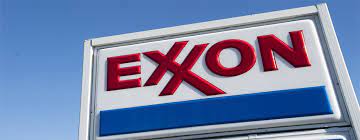Oil & Energy
‘Exxon’s Falling Production, Highly Bullish For Oil Prices’

Last week, ExxonMobil (NYSE:XOM) reported Q 2 2021 earnings in one of big oil’s most anticipated scorecards this earnings season. The United States’ largest oil and gas company posted stellar earnings that proved that the worst for the U.S. shale industry might finally be in the rear view mirror. Exxon’s Q2 earnings swung to a $4.7billion profit from a loss $1.1billion in the year-earlier quarter while revenues more than doubled to $67.7billion (+107.7 percent Y/Y), with both metrics exceeding Wall Street’s expectations.
Exxon said that its impressive earnings were driven by strong oil and natural gas demand as well as the best-ever quarterly chemical and lubricants contributions.
The company was able to achieve those results despite declining production: Q2 overall production slipped 2% Y/Y to 3.6million boe/day, despite production volumes in the Permian Basin jumping 34% Y/Y to 400K boe/day.
Exxon’s Q2 production clip marks the lowest level since the 1999 merger that created the oil and gas giant that we know today.
Meanwhile, H1 Capex clocked in at $6.9 billion, with full-year spending expected to come in at the lower end of its $16billion-$19billion guidance range.
Exxon says cash flow from operating activities of $9.7 billion was the highest in nearly three years and sufficient to cover capital investments, dividends, and pay down debt.
But persnickety shareholders appear unimpressed and have been bidding down XOM shares after the company failed to announce any share buyback program.
Whereas Chevron (NYSE:CVX), Shell (NYSE:RDS.A),and TotalEnergies (NYSE:TTE) all have announced a return to stock buybacks during the current earnings season, Exxon has opted to pay down debt rather than reward shareholders. Exxon suspended buybacks in 2016 as it went on one of the most aggressive shale expansions, particularly in the Permian.
WSJ Heard On The Street’s Jinjoo Lee says Exxon has less flexibility than its peers, thanks to years of overspending followed by a brutal 2020. This has left the company in a vulnerable position, and now Exxon has little choice but to lower its debt levels which have recently hit record highs.
CEO Darren Woods, has reassured investors that reinstating buybacks is “on the table,” though he has reiterated that “restoring the strength of our balance sheet, returning debt to levels consistent with a strong double-A rating” remains a top priority.
But overall, Exxon’s declining production is the way to go in this environment.
Energy finance analyst at IEEFA, Clark Williams-Derry,a non-profit organisation and Kathy Hipple, has told CNBC that there’s a “tremendous degree” of investor skepticism regarding the business models of oil and gas firms, thanks to the deepening climate crisis and the urgent need to pivot away from fossil fuels. Indeed, Williams-Derry says the market kind of likes it when oil companies shrink and aren’t going all out into new production but instead use the extra cash generated from improved commodity prices to pay down debt and reward investors.
Investors have been watching Exxon closely after the company lost three board seats to Engine No. 1, an activist hedge, in a stunning proxy campaign a few months ago. Engine No. 1 told the Financial Times that Exxon will need to cut fossil fuel production for the company to position itself for long-term success. “What we’re saying is, plan for a world where maybe the world doesn’t need your barrels,” Engine No.1 leader Charlie Penner told FT.
Better still, Exxon has been quickly ramping up production in the Permian, where it’s targeting a production clip of 1 million barrels per day at costs of as low as $15 per barrel, a level only seen in the giant oil fields of the Middle East. Exxon reported that production volumes in the Permian Basin jumped 34% Y/Y to 400K boe/day, and could hit its 1 million b/d target in less than five years.
After years of under performance amid weak earnings, the U.S. shale sector remains on track for one of its best years ever.
According to Rystad Energy, the U.S. shale industry is on course to set a significant milestone in 2021, with U.S. shale producers on track for a record-high hydrocarbon revenue of $195 billion before factoring in hedges in 2021 if WTI futures continue their strong run and average at $60 per barrel this year and natural gas and NGL prices remain steady. The previous record for pre-hedge revenues was $191 billion set in 2019.
Rystad Energy says that cash flows are likely to remain healthy due to another critical line item failing to keep up: Capital expenditure.
Shale drillers have a history of matching their capital spending to the strength of oil and gas prices. However, Big Oil is ditching the old playbook this time around.
Rystad says that whereas hydrocarbon sales, cash from operations, and EBITDA for tight oil producers are all likely to test new record highs if WTI averages at least $60 per barrel this year, capital expenditure will only see muted growth as many producers remain committed to maintaining operational discipline.
For years, ExxonMobil has been one of the most aggressive shale drillers with massive spending and capex. Luckily, the company is no longer too keen on maintaining that tag, which is bullish for the U.S. shale sector.
There are already growing fears that a full return of U.S. shale due to improved commodity prices could muddy the waters for everyone
According to an analysis by the authoritative Oxford Institute for Energy Studies, rising oil prices could allow for a significant return of US shale to the market in 2022, potentially upsetting the delicate re-balancing of the global oil market.
“As we enter 2022, the US shale response becomes a major source of uncertainty amid an uneven recovery across shale plays and players alike. As in previous cycles, US shale will remain a key factor shaping market outcomes,” Institute Director Bassam Fattouh and analyst Andre as Economist have said.
Obviously, many investors would prefer that this happens later rather than sooner and so far, indications are that this is the most likely trajectory.
By: Alex Kimani
Kimani writes for Oilprice.com
Oil & Energy
TotalEnergies, Conoil Sign Deal To Boost Oil Production

Oil & Energy
“COP30: FG, Brazil Partner On Carbon Emissions Reduction

Oil & Energy
DisCo Debts, Major Barrier To New Grid Projects In Nigeria ……. Stakeholders

-

 Niger Delta5 days ago
Niger Delta5 days agoBayelsa’s Aircraft Makes Inaugural Flight…As Lawmakers, Oil Minister, NDDC’S MD Hail Diri
-

 Featured1 day ago
Featured1 day agoOil & Gas: Rivers Remains The Best Investment Destination – Fubara
-

 Nation2 days ago
Nation2 days agoOgoni Power Project: HYPREP Moves To Boost Capacity Of Personnel
-
Nation2 days ago
Hausa Community Lauds Council Boss Over Free Medical Outreach
-
Nation2 days ago
Association Hails Rivers LG Chairmen, Urges Expansion Of Dev Projects
-
Nation2 days ago
Film Festival: Don, Others Urge Govt To Partner RIFF
-
Rivers2 days ago
UNIPORT Moves To Tackle Insecurity … Inducts Security Experts
-

 News1 day ago
News1 day agoNDLEA Arrests Two, Intercepts Illicit Drugs Packaged As Christmas Cookies

